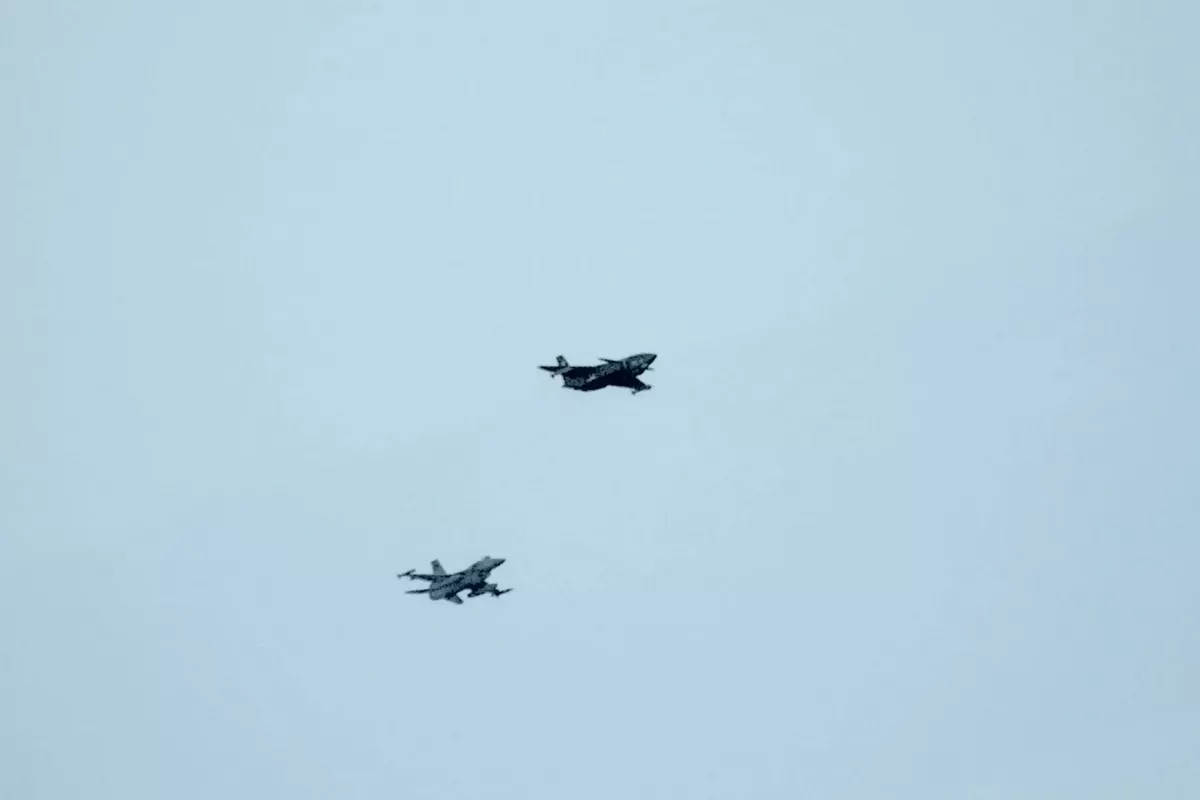
Photo: Anadolu Agency
Türkiye’s first unmanned fighter jet, Bayraktar Kızılelma, has completed another historic milestone, successfully locking onto an F-16 target and achieving a direct hit in a simulated firing exercise using the domestically developed Gökdoğan air-to-air missile, Baykar announced Thursday.
According to a statement from Baykar, the Bayraktar Kızılelma, developed indigenously and with the company's own resources, has successfully navigated another critical milestone that will prove its effectiveness on the battlefield, The Caspian Post reports, citing Turkish media.
Taking off from the Akıncı Flight Training and Test Center in Çorlu in Tekirdağ, the homegrown unmanned combat aircraft conducted a one-hour, 45-minute flight at an average altitude of 15,000 feet, performing a close encounter with F-16s and verifying the integration of the national radar and munitions.
This flight brings the Bayraktar Kızılelma's total flight time during the tests to over 55 hours, the company said.
Two Turkish Air Force F-16 fighter jets participated in the Bayraktar Kızılelma-Gökdoğan armed flight and Murad AESA Radar performance test, it added.
One of the F-16s performed close formation flying with the Kızılelma, demonstrating the platform’s compatibility with manned fighter aircraft, while the other F-16 acted as the “target aircraft” within the test scenario.
Within the scope of the test, Kızılelma detected the target F-16 at a distance of 48 kilometers (30 miles) using the Murad AESA Radar developed by Aselsan and locked onto the target, Baykar said.
It then executed a simulated electronic firing using the Gökdoğan Beyond-Visual-Range Air-to-Air Missile (BVRAAM), also developed domestically by the Scientific and Technological Research Council of Türkiye (TÜBITAK).
"In the simulation, Bayraktar Kızılelma successfully neutralized the highly maneuverable F-16 target with a virtual direct hit, marking a major step forward for air-to-air combat capability," the company noted.
One of the most critical phases of the test involved evaluating the communication infrastructure between the aircraft, radar, and missile.
After locking onto the target F-16, Kızılelma transmitted real-time target, position and velocity data obtained from the MURAD AESA Radar seamlessly to the Gökdoğan missile carried under its wing. The successful validation of this data link between the aircraft and the munition represents a significant milestone in its capability to neutralize beyond-visual-range (BVR) targets.
During this historic flight over the skies of Tekirdağ, in northwestern Türkiye, three distinct and challenging test scenarios were executed simultaneously with success, according to the company.
It listed them, explaining: "The F-16 formation flight - which demonstrated the capability for joint operations with manned fighter aircraft - offered insights into future air-combat concepts. The aerodynamic and avionic compatibility of the platform was verified through the Gökdoğan Beyond-Visual-Range Air-to-Air Missile carried under the wing. In the same flight, the detection, tracking, lock-on and data-transfer capabilities of the national Murad AESA Radar - which was activated for the test - were also proven under demanding conditions."
The Kızılelma is Baykar's flagship aircraft, which took to the skies back in 2022 and has conducted a series of tests since.
Earlier this week, the company announced that Kızılelma successfully integrated a domestically developed low-observable electro-optical targeting system (EOTS), which was earlier reserved only for the most advanced manned jets, making Türkiye one of a few countries in the world to have this capability.
Share on social media